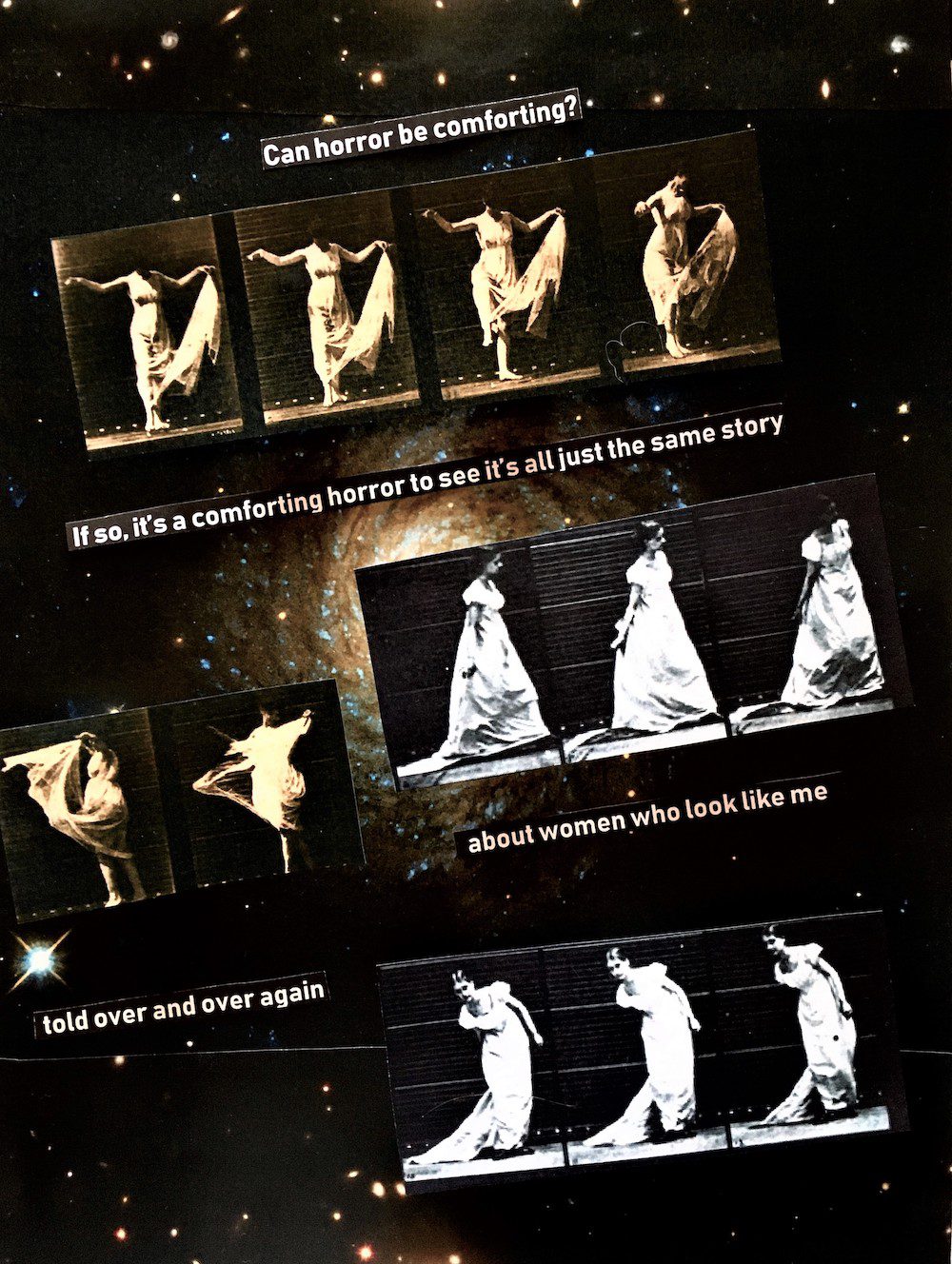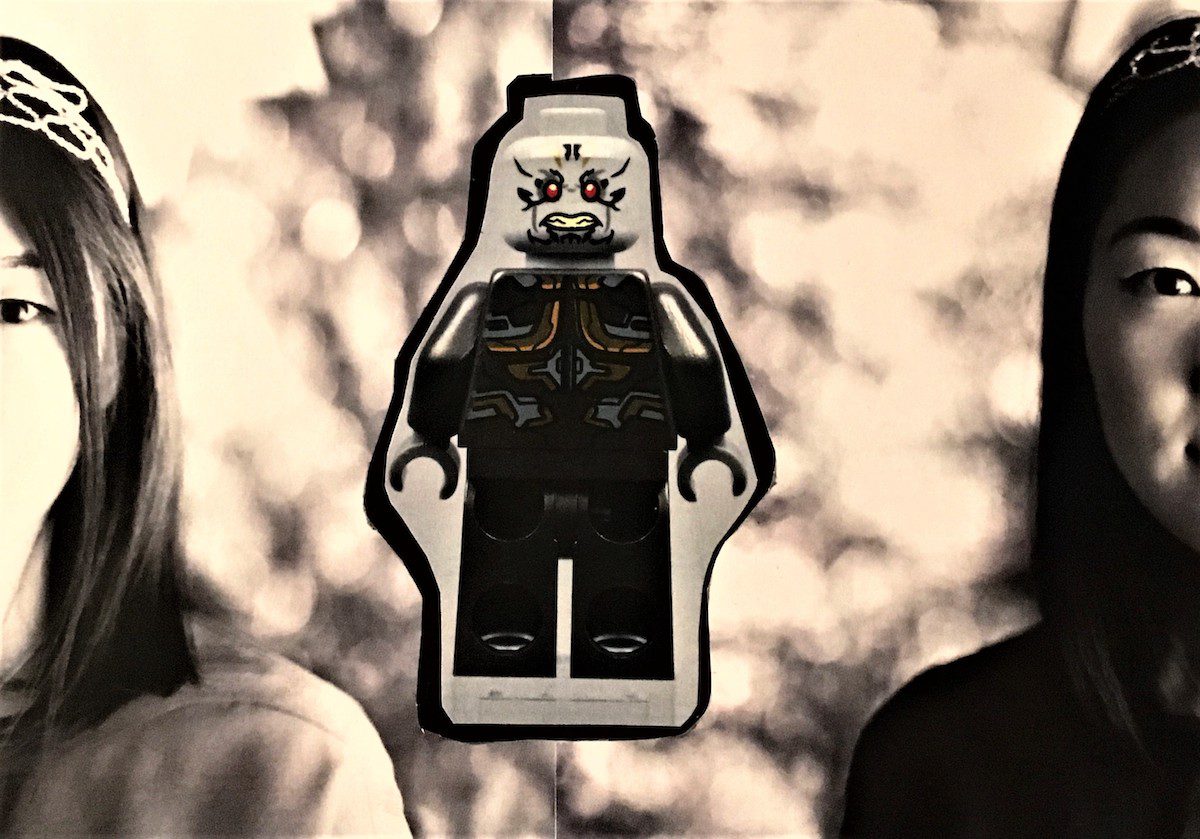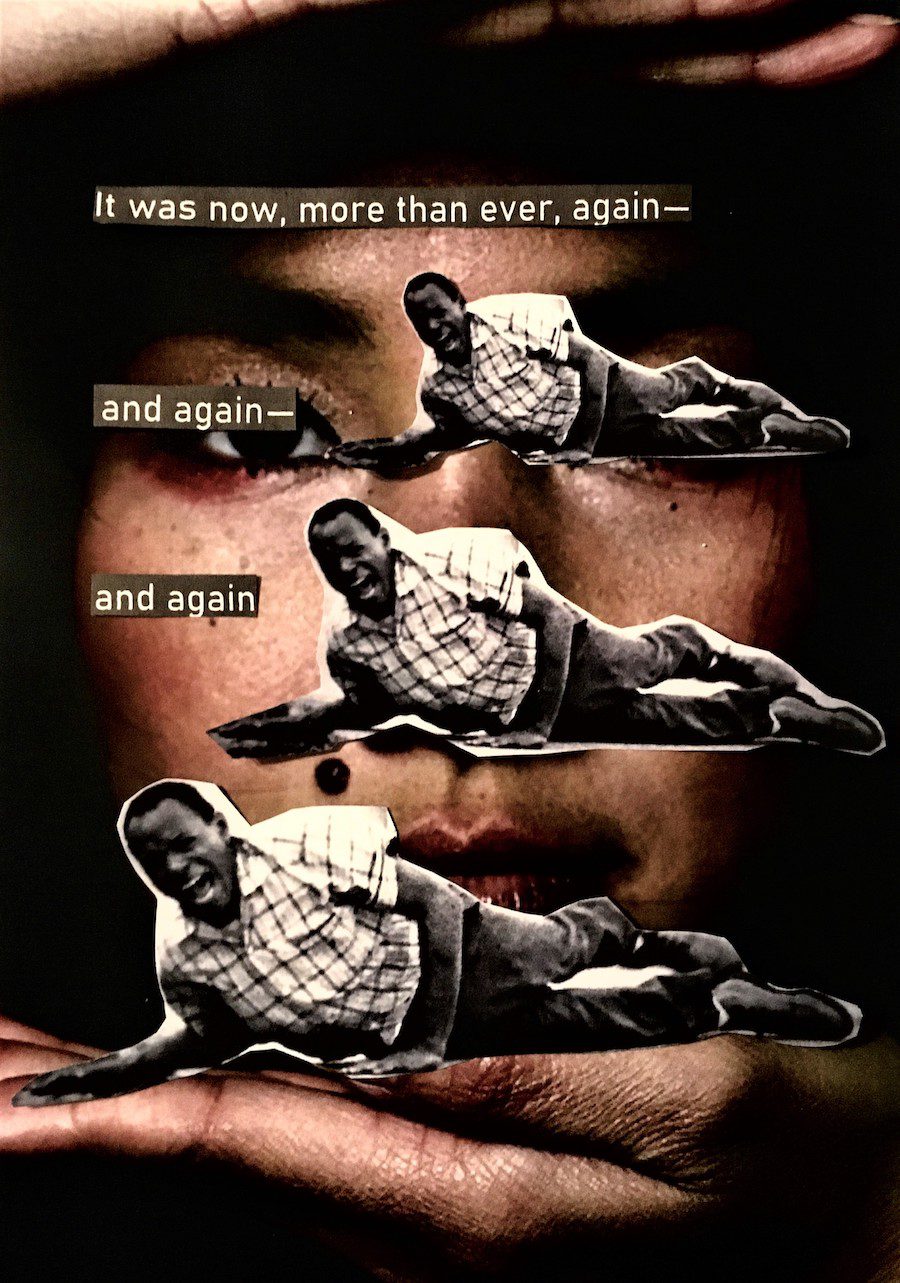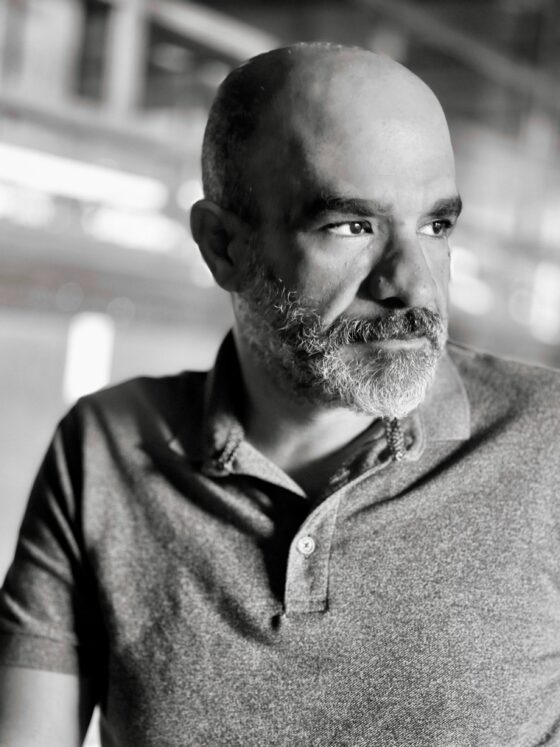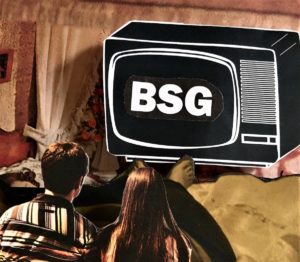
I knew Boomer before I knew Boomer, if you know what I mean. I’m talking about the character played by Korean Canadian actress Grace Park on the critically acclaimed Battlestar Galactica reboot of the early aughts. I didn’t watch the show when it first aired, but I’d heard about some of the controversy around the choice to cast Boomer, who is secretly a robot (a Cylon, in the show’s parlance) as Asian. That might have been part of the reason I didn’t watch the show for years, though friend after friend recommended it to me. I couldn’t imagine what I might learn from it that I hadn’t already seen in every other iteration of the “is she a sexy robot, or just Asian?” storyline. Still, I knew I ought to try to get past the first two episodes, as tiresome as it all seemed.
As luck would have it, Syfy.com made the show available to stream for free at the end of March—just a few weeks after the stay-at-home orders came down. Since we were locked in our apartment with little else to do, I was effectively out of excuses. And so my partner and I spent the early days of the pandemic marathoning Battlestar Galactica. As our timelines filled with people excitedly using the word “apocalypse,” we watched the last human survivors flee a nuclear holocaust into space. We watched death tolls around the world rise, while, on President Roslin’s white board, the survivor count steadily ticked down. In New York, corpses were hauled into a refrigerated truck. Meanwhile, in a distant future-past, the terrible blankness of space loomed—all alien and deeply familiar at once.
Like much of post-9/11-era media, BSG is a story about an “us” and a “them.” When the show begins, it’s been forty years since the last Cylon War, when robots rebelled against their makers, then disappeared into space. One day, the Cylons return to launch a surprise nuclear attack, destroying virtually all of human civilization. A ragtag fleet of about fifty thousand survivors manages to get away, and the old battleship Galactica is charged with protecting them all, as well as leading them on their search for the mythical planet known from scriptures as “Earth.” Throughout much of the show, it’s unclear whether we’re in the future, the past, or some alternate universe. In any case, the cyclical nature of things is central to the show’s ethos, reiterated over and over via the Cylon aphorism, “All this has happened before, and all this will happen again.” At the end of the two-part miniseries that launches the first season, it’s revealed that Lieutenant Sharon Valerii, call sign Boomer, is actually a Cylon, though she herself has no idea. She’s one of the twelve newer models, who have “evolved” to look—and smell and feel and fuck—exactly like humans. There are many copies of each model; she’s an Eight.
Like all pieces of media in which robots or AI figure heavily, BSG grapples with the question of what it means to be human. Although Boomer is far from the only Cylon character, she’s a pressure point for the drama of Cylon identity, especially in the show’s first season. It’s Boomer who wrestles with the idea of having secret, programmed allegiances. Her storyline is defined by suspicions—hers and others’—about who she might really be. And though Boomer is mostly a sympathetic character, that sympathy gets increasingly complicated, until, at the end of the first season, Boomer betrays everyone by shooting the ship’s Commander—and her own father figure—straight in the chest. That betrayal will haunt the character for the remainder of the show’s four seasons, as she’s imprisoned, exiled, and forced to reckon with being not only a machine, but also a traitor.
Inevitably, an us-versus-them story that grapples with what it means to be human will also be driven by the question of race. It bears mentioning that Boomer and the other Eights are the only East Asians—and among very few characters of color—on BSG. Watching the show, it was easy to see how Boomer became the figure that launched a thousand scholarly articles. Bearing both the full weight of representing East Asian women on the show and the most in-depth case study in the “problem” of Cylon identity, she is the point at which those two concepts converge. That is, Boomer reflects back many of the racist associations that have historically linked East Asians to robots: inscrutable, unfeeling, identical, dangerously communal, and out to destroy us (“us” being relative). Juliana Hu Pegues calls her “the epitome of yellow peril,” the oldest and most enduring framework for anti-Asian sentiment in the United States. Watching Cylon raiders scatter across space like insects from a hive, I couldn’t help but think of the political cartoon I’d seen just a few weeks before, the one from 1878, depicting Chinese immigrants as a plague of locusts. Like I said: all this has happened before, and all this will happen again.
Scholar after scholar has written about the ways Boomer and the other Eights help retell the story of anti-Asian racism, by which I mean both broad narratives about Asian people and literal stories in the Western canon. Pegues, for example, reads Boomer against Miss Saigon, itself a retelling of Madame Butterfly. She describes how Boomer’s storyline reiterates the same tragic tropes of Kim and Butterfly, even overlays details of their respective death scenes to show the similarities. It’s such a satisfying reading that I almost don’t notice the sour taste in my mouth. Can horror be comforting? If so, it’s a comforting horror to see it’s all just the same story, told over and over again, about the women who look like me. I nod and underline my way through Pegues’s essay, though I’ve seen neither Puccini’s opera nor its Broadway reboot. And why would I, when their reverberations are so perfectly preserved everywhere I look, in old sci-fi shows, in the news—even in my own discomfiting past?
Speaking of rebooting, that’s a Cylon thing, too. When Cylons’ bodies die, their consciousness is downloaded to a new body, and they wake up on a ship thousands of miles away—usually gasping and screaming. It seems unpleasant, to put it lightly. But then, when are history’s repetitions ever pleasant?
The spring we started our BSG marathon, yellow peril was back in the news. In March, Trump crossed out “corona” from his speech notes and instead called the novel coronavirus a “Chinese virus.” In the following week, the Asian Pacific Policy and Planning Council received over six hundred and fifty reports of incidents of anti-Asian discrimination. For a period, my timeline was filled with people being screamed at, spat on, stabbed. As is often the case, it didn’t seem to matter that some of the people targeted weren’t in fact Chinese. It’s the nature of this brand of bigotry—if not all bigotries—to flatten, to insist on seeing a swarm of copies, each bearing the sins of the whole.
There’s this scene, in the episode “Kobol’s Last Gleaming, Part Two,” when Boomer lands on a Cylon base ship to discover a crowd of identical selves emerging from the shadows. Up to this point, she’s refused to give in to the suspicions circulating around her. But there, suddenly, is her own face, monstrously copied, her own voice coming out of a hundred identical mouths. Boomer stares, horrified, as she realizes it’s all true—she’s not a person but a thing, not Sharon Valerii but simply another Eight. In terror, she flees, leaves the ship, tells no one. And can you blame her? Cylons are the enemy, and looking like the enemy has deadly consequences.
For many Asian American writers and advocates, the spike in hate crimes this spring became a reason to remind people that America had never exactly stopped seeing us as the enemy. There were articles about the continuing legacy of the Chinese Exclusion Acts, history lessons about Vincent Chin and Chinatown massacres circulating on Twitter. It was a moment of sudden, terrible visibility, and in that moment, it seemed crucial to say, “Hey! All this has happened before!” That is, this wave of violence isn’t an anomalous blip, but carries meaning beyond this moment. Yet, as much as I agreed, I kept finding myself remaining on the periphery of these conversations. I watched other middle-class, light-skinned East Asians rally around the issue with an enthusiasm that both excited me and gave me pause, though I wasn’t sure why. I wondered if I’d taken the fear of being subsumed into the crowd too far; if I was turning and running from a ship full of my sisters, simply because I found my own face copied there, and it made me afraid. Was I a traitor? And if so, to whom?
I should mention here that there’s another Boomer to consider. That is, there’s another Eight that emerges from the crowd and becomes an important character in the show. She calls herself Athena, and she operates, largely, as Boomer’s foil.
“I’m Sharon, but I’m a different Sharon. I make my own choices,” Athena insists. She begins as a Cylon spy but ends up falling in love with the human pilot Helo and betraying her mission. Where Boomer failed to integrate into the human fleet, Athena—after a long uphill battle—succeeds. She marries Helo and gives birth to a half-human child. She endures racism, abuse, and incarceration, sticking it all out until finally, she becomes an officer of the human fleet, gunning down Cylon raiders with grim loyalty. And while Athena never denies her Cylonness, nor believes in the supremacy of humans, she does eventually become a citizen, even a hero. Watching Athena move through the ranks, I felt an uncomfortable pang of recognition. Every day the “Chinese virus” swirled in the news, I thought about all the years I’d spent training myself to be indistinguishable from humans. Every time I forced myself to smile at strangers through my mask, I felt more revulsion about everything I’d learned.
Near the end of the fourth season of BSG, there’s a scene where Boomer, returned to the Galactica on a mission to kidnap the half-Cylon child, finds Athena in the locker room and brutally attacks her. Later, in order not to be caught, she has sex with Athena’s husband, while a barely conscious Athena is forced to watch from the stall where she’s tied up. It’s a deeply uncomfortable scene, one whose reliance on shock value and fetish is painfully obvious. And still: how many times have I wanted to ambush the Good Me and bless her with my fists? How many times have I wanted to take revenge on her, on us?
Early on in the pandemic, when hospital workers were scrambling for PPE, I dropped off a box of homemade face masks to a nurse I was connected with via a Facebook group. We never saw each other’s faces. In texts, I called myself “Franny,” no last name. When she sent an American flag emoji with her “thank you” text, I wondered. A few weeks later, the Washington Post ran an op-ed by Andrew Yang, in which the former presidential candidate encouraged Asian Americans to “wear red white and blue” to show our patriotism. All the radical Asians I knew were disgusted, including me. I couldn’t stop thinking about that emoji in the nurse’s text, wondering if I should have said something. But what would I have said? “By the way, I’m a chink”? Or: “By the way, I’ve read American history. I know what that flag has done”?
At the same time that some people were insisting that the new news was old news, everyone, including me, was also using the word “unprecedented.” “This unprecedented health crisis,” I wrote in an email to my landlord, explaining why I couldn’t pay rent. “This unprecedented situation,” wrote the dean, explaining why they were sending all of our students home with four days’ notice. “Now more than ever!” cried the call for submissions, the advertising campaign, the political speech, the fundraising pitch—just as they’d done four years before, when Trump was elected. Somehow, it had become now, more than ever, again.
As much as saying, “All this has happened before” is a way to comfort ourselves in the midst of a frightening situation, the same somehow seems true of its opposite. There’s something reassuring in the idea that our times are singular, that no one could have predicted this. Saying “now more than ever” relieves any listeners of the need to consider history. It allows us (“us” being relative) to stand at the edge of the world, to look out into the unforgiving endlessness of space and call all of it enemy.
As May came to a close, we rounded the last season of BSG. Boomer was dead, no more reboots; she’d gone the way of Butterfly and Kim after all. Athena and her child had made it to a new planet, which would turn out to be a pre-civilization Earth. The show ends in the present day—meaning 2009—just at the cusp of the next iteration of the ancient cycle of human civilization, artificial intelligence, robot rebellion, apocalypse. I understood why so many fans hated the last season, especially the finale. Everything was a little too neat, too pat. Of course it all ends with a ghoulish warning to the human race; of course the big, flat lesson at the end is just another reiteration of that same Cylon scripture: all this will happen again, blah, blah.
Joylessly, I report that it turned out to be true. We were on the edge of another cycle, though not the one I’d anticipated. Days after we finished BSG, in the middle of an “unprecedented” America, a cop murdered George Floyd while three others watched. It happened, as it had happened before, and before, and before. Minneapolis erupted out of quarantine into rage and grief. It was a new world; it was the same world. Aside from the protestors’ masks, the photos from Minneapolis in 2020 looked eerily like the photos of Ferguson in 2014. We chanted the same chants as we had then, and I reencountered the strangeness of watching white people shout, “Hands up, don’t shoot.” Again, the heightened attention on racist police violence boosted stories that would otherwise have been buried in local circulation into national news, so the news of killings seemed to come in quicker succession, each one bringing a new wave of exhausted mourning. It was now, more than ever, again—and again—and again.
Meanwhile, another old lesson was collapsing, again, into obviousness. Once again, it turned out we only had to follow anti-Asian hate crimes for so long before arriving back at the nation-making behemoth of structural anti-Blackness. Again, we were reminded that our struggles are not equivalent, though the relation between them is ever far from simple. There was a flurry of conversation when it was revealed that Hmong American Tou Thao had been among the police officers present at Floyd’s murder—a conversation reminiscent of those that emerged around the case of Peter Liang, the NYPD officer who killed Akai Gurley in 2014.
“That is America,” said an enraged Hasan Minhaj on his show Patriot Act. “A Black man was murdered in cold blood, and we were on the fucking sidelines, watching.”
There’s no comfort in the cyclical nature of things when the thing being repeated is the absolute raw deal of white supremacy. Of course, naming the repetitions of history is necessary work, especially for those whom privilege has soothed into ignorance. But for those who already know, re-diagnosing the persistence of white supremacy is such a short-lived antidote, ultimately, to the problem of “now, more than ever.” To say, “racism then is racism now” makes a neat little square, a tight argument, and then—what? It’s 2020, and I watch my friends ride along the same tracks of outrage, mourning, over-grind, burnout. Again, my friends are grieving thirty things at once: it’s the anniversary of the Pulse shooting; it’s the anniversary of the Tulsa massacre. The new news is old news, but being well-versed in one’s danger is not the same thing as being safe.
In Minneapolis, a few miles from the giant, flower-covered memorial that now stands in the spot where America’s oldest story reappeared, my friend Bao is talking about the work of breaking cycles of anti-Blackness in Asian America. But this work, he insists, is more complicated than simply rejecting the crowd. Instead, it needs to get more entangled: to consider the long history of Hmong communities in Minnesota being themselves targeted by cops; the history of what Hmong people survived before their migration to the US. To consider Cambodian youth targeted by cops in Providence, and South Asian Muslims targeted by cops in New York, and Asians from across our diasporas dying in ICE detention centers. To consider the Palestinian American owner of Cup Foods, whose clerk called the cops on Floyd—and to learn from the ways he entered into restorative conversations with Floyd’s family, denounced the police, and paid for the memorial service.
“We’re not a monolith,” Bao says. And when he says it, I don’t hear, “I’m not like the others,” or “I’m one of the good ones,” or even, “I make my own choices.” What I hear is an echo of the quote by scholar Rose Braidotti: “If power is complex, scattered, and productive, so must be our resistance to it.”
“We’re not a monolith,” Bao says. The phrase reverberates back through movements, generations, years of our images in film and screen and imagination.
I watched Battlestar Galactica—a reboot in more ways than one—during an unprecedented time that’s come a million times before. I watched it to see what it had to say about me, and about us; about “now,” and about “ever.” There’s a version of this essay that discusses how Cylons function as a metaphor for our fears of a rapidly replicating virus; how the virus itself functions as a vector for our fears of a rapidly developed Asia. That’s the essay I started to write, before the taste of certainty became too sour for me to ignore. If 2020 has shown us anything, it’s that certainty is a tough bet.
Instead, I’ll end by talking about where Cylons go when they die. Like I mentioned, when a Cylon’s body is killed, her consciousness is transferred to a new body on board what they call the “resurrection ship.” They wake up floating in a tank of primordial goo, screaming and shaking from the memory of death, which, the show insists, is horrible whether or not you wake up on the other side. For the humans, the phenomenon of Cylon regeneration makes fighting them a Sisyphean task. (“They’ll just download into a new body. What’s the point?” grumbles one resistance fighter as he rigs an explosive.) But for Cylons, it means death becomes, as Athena puts it, “a learning experience,” one so profound that, at one point, one Cylon model even embarks on a series of research trips via suicide. In that gap between dying and reawakening, mysteries swirl; faces emerge from the shadows. Things change. So: what’s the difference between one cycle and the next? Everything that happens in the process, including the pain, the shock, the strange images that rush past in the dark, and then, the stiffness as you learn to move, speak, and fight again.
Yes, all this will happen again. In the meantime, the people who were sixteen before are twenty-one now. In the meantime, politicians start using the word “abolition”; the landscape of Asian Pacific American political thought expands, queers, gets more flexible. In the meantime, you are not the same person you were the last time you were forced to encounter your twin. Yes, the old stories will reemerge. In the meantime, there’s the distance between “hands up, don’t shoot” and “you about to lose your job.” In that distance, worlds emerge; in those worlds, more distances.
The first time Boomer regenerates, her whole body convulses with shock as other Cylons whisper words of reassurance. When a fellow Eight steps forward to say, “We love you,” she turns away at the sight of her mirror image, screams a long, rueful “No.” I’ve never known how to meet a badly drawn twin with anything but fury, either. This time, too, I couldn’t help but hate the way it all ended: Boomer, the ruined hero; Athena, the empowered colonizer.
But if Boomer and Athena’s storylines prove anything, it’s their model’s capacity for divergence. So today, I’m thinking about all those other Eights—the infinite versions of the story they might make possible, and also the possibilities they might, through their strange and scattered existence, point to in us. Oh, Boomer. I know another cycle’s on its way. I know we’ll meet again before long. I wonder how many more times each of us will have to reawaken before I can see you and know that I’m home.
***
Rumpus original art by David Dodd Lee.

